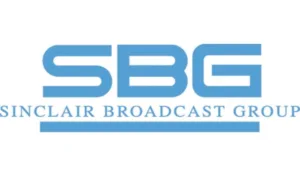Sinclair Broadcast Group, Inc. (Sinclair) and ONE Media 3.0, LLC applaud the International Telecommunication Union’s (ITU) adoption of the ATSC 3.0 digital broadcast standard for use by all countries in the world.
The U.S. Delegation, with active and critical support from Sinclair and ONE Media, proposed ATSC 3.0 – the world’s first Internet-Protocol-based television broadcast standard – to the ITU in April 2019. The ITU, a United Nations specialized agency, is charged with ensuring rational, equitable, efficient and economical use of the radio-frequency spectrum and develops worldwide recommendations, reports and handbooks on a wide range of radiocommunication services, including the broadcasting service. ATSC 3.0 dramatically improves on other world digital standards and, importantly, paves the way for both enhanced traditional television and new data services to be provided in concert with 5G telecommunications delivery systems.
Developed by the Advanced Television Systems Committee, the ATSC 3.0 standard has been adopted in both the United States and the Republic of Korea. The suite of voluntary technical standards and recommended practices represents significant enhancements from the original ATSC 1.0 standard first adopted in 1996. It will provide an alternative to other digital terrestrial television standards including the European DVB-T, Japanese/Brazilian ISDB-T, and Chinese DTMB platforms.
“We’re delighted that the nations of the world have approved use of this extraordinary new standard,” said Christopher Ripley, Sinclair’s President and CEO. “The Next Gen transmission standard will provide consumers with a host of new services and expand opportunities for broadcasters and service providers around the world. By integrating broadcast and broadband services, ATSC 3.0 also can be part of the 5G transmission ecosystem for non-television data transmission services,” he added.
The IP-based standard, incorporates remarkable new capabilities to:
- Enhance quality for audio and video services;
- Provide robust mobile reception on a wide range of devices;
- Improve spectrum efficiency;
- Provide resilient advanced emergency information;
- Personalize features and services; and,
- Furnish interactive services.
Ripley added, “We congratulate both the U.S. Delegation led by the FCC and the ITU’s Working Parties and Study Group for their foresight and keen acknowledgement of the need for broadcast innovation. The ITU Staff and contributing administrations have done an excellent and thorough analysis, and we appreciate their great efforts to think through ramifications and permit the market to flourish with minimal constraints.”
Next steps toward implementing the new standard involve updating the ITU-sanctioned Digital Handbook. This detailed set of implementation steps will enable countries worldwide to understand how ATSC 3.0 could enhance a move from analog to digital capabilities or upgrade existing digital services. Louis Libin, Sinclair’s Vice President for Spectrum Engineering and Policy, chairs the ITU Rapporteur Group assigned to modify the Digital Handbook. Libin noted, “Adoption of the ATSC 3.0 standard as an international sanctioned offering will provide extraordinary options to many countries and adds impetus to complete our work on providing those guidelines quickly.”

